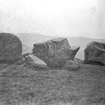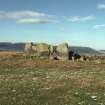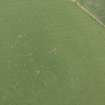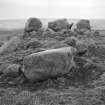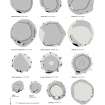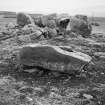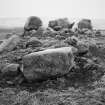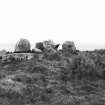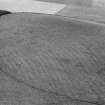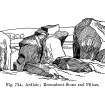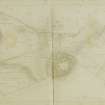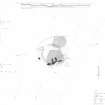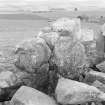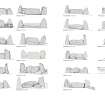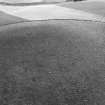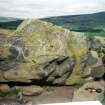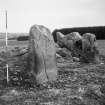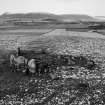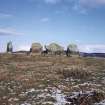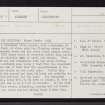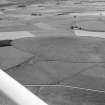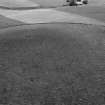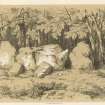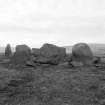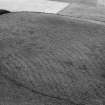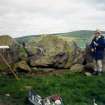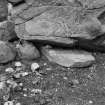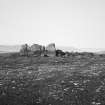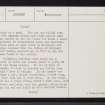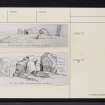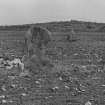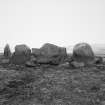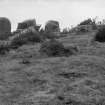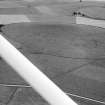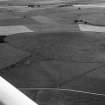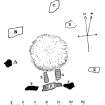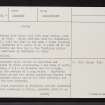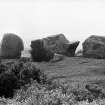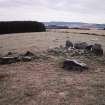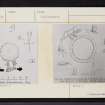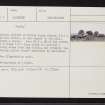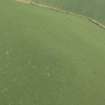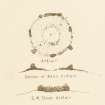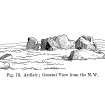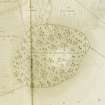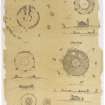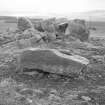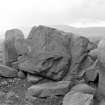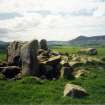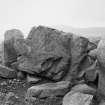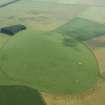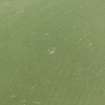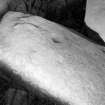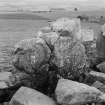Ardlair
Cup Marked Stone(S) (Prehistoric), Recumbent Stone Circle (Neolithic) - (Bronze Age)
Site Name Ardlair
Classification Cup Marked Stone(S) (Prehistoric), Recumbent Stone Circle (Neolithic) - (Bronze Age)
Alternative Name(s) Holywell
Canmore ID 17641
Site Number NJ52NE 4
NGR NJ 5527 2794
Datum OSGB36 - NGR
Permalink http://canmore.org.uk/site/17641
- Council Aberdeenshire
- Parish Kennethmont
- Former Region Grampian
- Former District Gordon
- Former County Aberdeenshire
NJ52NE 4 5527 2794
(NJ 5527 2794) Stone Circle (NR)
OS 6" map, (1959)
A recumbent stone circle, with a diameter of 35 feet, of which only the flanking stones of the recumbent stone and one other stone remain erect. In 1857 there could be detected within this circle a low circular bank of earth and stone. This bank was not concentric with the stone circle, its southern edge being 5 feet from the recumbent stone and 10 feet from the circumference of the stone circle on the north side. Within this bank the ground had been hollowed out probably to obtain material for the bank. The recumbent stone, lying E-W, is 8 1/2 feet in length, 4 1/2 feet in height and up to 3 feet in breadth. At the back of this stone, projecting inwards but not touching it, there are two stones about 3 feet long, parallel to each other and about 3 feet apart, the ends of which touch the earth bank. The east and west stones flanking the recumbent stone are 4 feet 6 inches and 4 feet 2 inches in height respectively. The only other erect stone seen by Coles (1902) in 1900 was 5 feet in height and the four fallen, or leaning stones he measured were about 6 feet in length. But in 1857 there were seven stones on the circumference of the circle, besides the recumbent stone and its flankers, varying from 4 to 5 1/2 feet in height.
An excavation was carried out within the circle in 1857 by C E Dalrymple but nothing was found except that at a spot on the south side of the inner circle at a depth of about a foot a pit, 4 feet in diameter and 2 feet in depth was found, covered by two stones, about 3 feet in length and one in breadth, leaning on one another like the ridge of a roof. The pit was filled with a few unburnt stones and light yellow loam but nearly at the top there was found a small quantity of incinerated bones and charcoal. There were no urns found by Dalrymple but Coles (1902) learned from the farmer at Holywell that during excavations in 1821 an urn had been found at the circle.
Dalrymple recorded that there was a mound of earth and stones about 12 yards NW of the stone circle. It was 30 feet in length, 10 feet in breadth and little more than 1 foot in height. In its centre was found a pit, placed lengthways, 6 feet long, 3 feet wide and 2 1/2 feet deep. At the north end was a large stone, about 5 feet long, laid across and level with the ground, below which the pit end was built in with smaller stones. It contained rich black soil with many stones, some marked by fire. Coles mentions that Mr Henderson, Holywell, told him that he had seen a stone standing as the headstone of a grave 10 or 12 yards SW of the stone circle and this may be the 'outlying pillar stone' mentioned by Callander in 1935.
J Stuart 1856; J Anderson 1886; F R Coles 1902; J G Callander 1935; Information from A Henderson, Holywell Farm; Information from C E Dalrymple.
A recumbent stone circle as described and illustrated by Coles (1902) surrounding a low bank of earth and stones, c 4.5m in diameter and 0.2m high, probably the remains of a ring cairn. Cup-marks are visible on the two stones projecting inwards from the recumbent stone; one on the more westerly, and two on the more easterly.
The mound described by Dalrymple and the headstone of a grave mentioned by Coles, probably refer to an amorphous scatter of fairly large stones, 13.0m NW of the circle, on the summit of the hill. Possibly a cairn. Some 40.0m SE of the circle lies a stone 1.8m long which is possibly a standing stone from the circle, and probably the 'outlying pillar stone' mentioned by Callander (1935).
Re-surveyed at 1/2500.
Visited by OS (NKB), 20 September 1967.
This recumbent stone circle is situated in pasture and occupies a prominent position on top of a small hill at an altitude of 249m OD.
NMRS, MS/712/52, visited 20 May 1978.
Field Visit (18 June 1998)
Commanding fine panoramic views, this recumbent stone circle occupies the summit of a hill 470m to the SW of Ardlair farm. It stands upon an old headland in a swath of broad rig-and-furrow cultivation (NJ52NE 28) that was preserved when a wood known as Ardlair Wood was planted on the hill towards the end of the 18th century; the trees were cleared after the 1870s and the area within the plantation boundary has remained in rough pasture ever since. Measuring 11m in diameter, the circle probably comprised nine stones, of which eight remain, the missing stone being on the NNW. Only the recumbent setting and one orthostat on the SW are still upright (8); another orthostat leans steeply (5), two have fallen (6 & 7), and the last lies cut down and displaced on the ESE (4). The recumbent (2), which measures 2.9m in length by 1.65m in height, is a rough block situated on the SSE of the ring, and has a pair of slabs set at right angles to its rear. The fractured character of the block suggests that it has been blasted, leaving the W end shattered and removing the E half of the outer face, though a few of the fragments may yet lie amongst the field-cleared stones gathered around its base. Such was the impact of the blast that only part of the recumbent’s summit remains intact, enough to suggest that it may have been even, but insufficient to confirm whether it was originally horizontal. The blast probably threw the eastern of a pair of support stones forwards, causing that end of the recumbent to slump. Like the recumbent, the W flanker (1), now only 1.5m high, has also lost part of its top, but otherwise the two flankers are of similar size and shape. Both are aligned with the front of the recumbent, but while the W flanker is turned to trace the arc of the circle, the E flanker is not. The latter, and the sole orthostat remaining upright (8), are about 1.7m high, suggesting the circle was graded to reduce in height from the S round to the shorter fallen stones on the N (5 & 6). The circle encloses a low mound of earth and stones measuring 8.5m from NE to SW by 7m transversely and 0.25m in height, though much of this is now obscured by field clearance, especially behind the recumbent setting, where only the upper sections of the pair of slabs set up at its rear are exposed. Both these stones have cupmarks on their upper surfaces, the single cup on the E slab being more visible than the two on the W.
Visited by RCAHMS (ATW and KHJM) 18 June 1998








































































